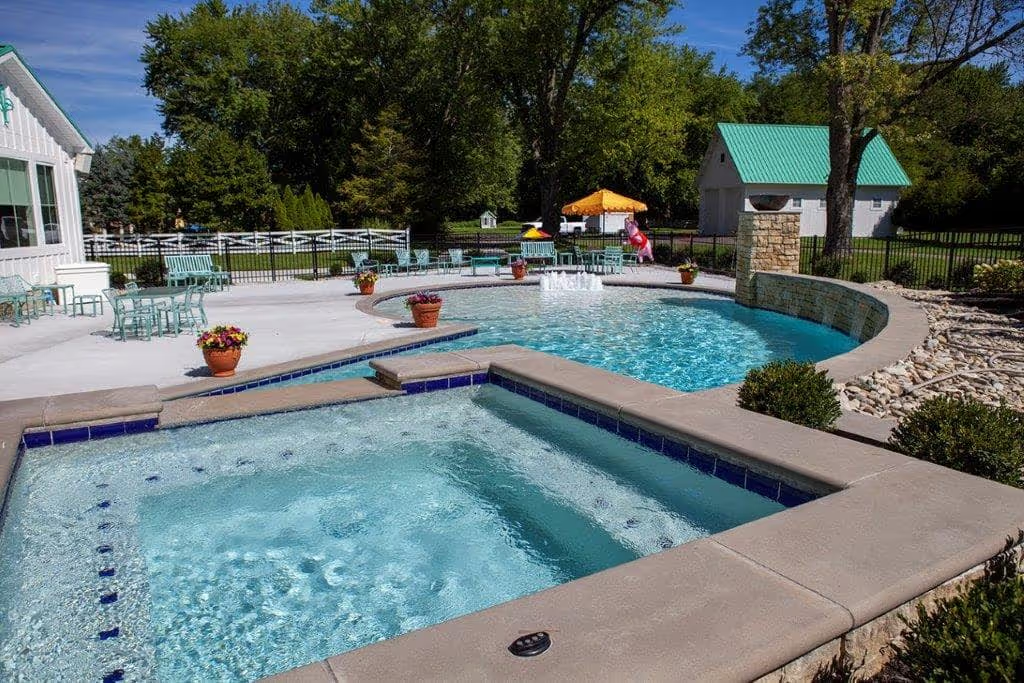- Stone Center
- Blog
Full-Bed Stone Veneer vs. Thin Stone Veneer: What Sets Them Apart?
12/12/2025
12/12/2025
Full-Bed Stone Veneer vs. Thin Stone Veneer: What Sets Them Apart?

When choosing between full bed stone veneer and thin stone veneer, understanding veneer stone thickness is where smart planning starts. This decision influences your space's appearance, budget, installation complexity, and even how well your stone holds up in the long run.
In this article, our team at Stone Center is diving deep into both types of stone veneer. Whether you're tackling a bold exterior makeover or adding texture to a feature wall, we'll help you make the right choice for your next project.
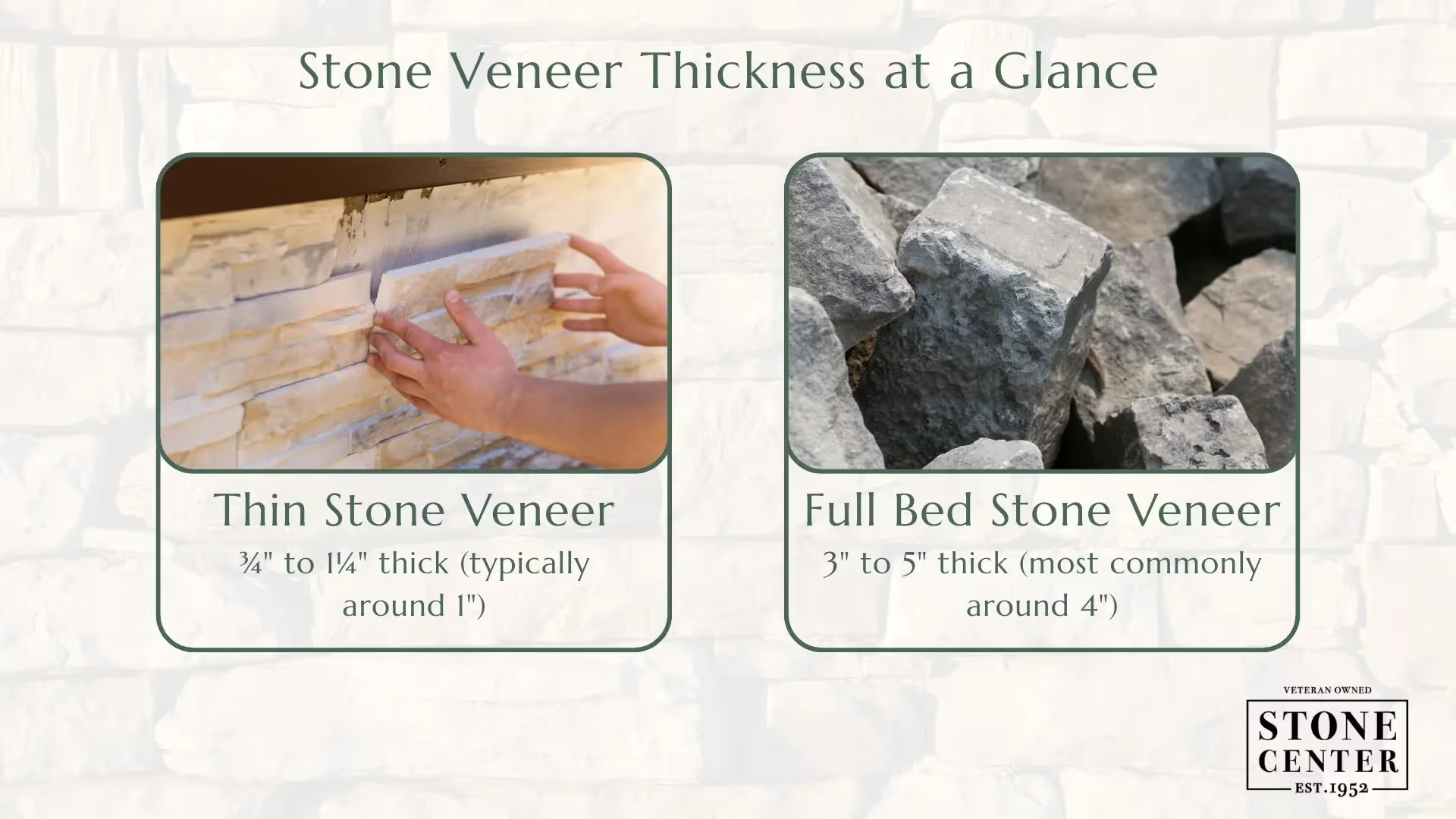
What Is Thin Stone Veneer?
Natural thin stone veneer is one of the most popular innovations in modern construction and design. This type of veneer is made from the real stone that has been cut thin and trimmed to fit the project requirements. Thin stone veneer thickness is about half an inch to one inch thick and weighs between seven and fifteen pounds per square foot. For example, Indiana splitface thin veneer.
One of the benefits of natural thin stone veneer is that it is easy to install. It can be applied directly to a variety of surfaces, including drywall, masonry, and concrete. However, thin stone veneer is more susceptible to cracking and chipping, and does not provide the same level of insulation as full bed stone veneer.
What Is a Full-Bed Building Stone Veneer?
Full-thickness building stone veneer represents the traditional approach to natural stone applications. This bed stone is three to five inches thick and weighs between thirty-five and forty-five pounds per square foot, requiring proper footing and structural support for installation.
The main benefit of using full bed stone veneer is its superior durability for withstanding extreme weather conditions with minimal maintenance needs. Full bed stone also provides better insulation than thin veneer stone, though it comes with higher material and labor costs.
Thin vs. Thick Stone Veneer: Side-by-Side Comparison
The choice comes down to more than just looks. Here's a quick reference to help you make the right choice based on your project needs.
Visual Appeal and Design Options
Both thin stone veneer and full stone veneer offer incredible design flexibility. For classic aesthetics, neutral tones like gray or beige work beautifully, while vibrant shades like blue, green, pink, or red create eye-catching statements. Versatile gray veneers and tan stones provide timeless looks, while multi-colored options deliver truly unique visual impact. Texture choices span from smooth and polished to rough and natural, allowing for personalized design expression.
Best Applications and Use Cases
Thin stone veneer is popular for use on exterior and interior walls, fireplace surrounds, wainscoting, and more. The reduced weight also makes it suitable for upper-story applications and retrofit projects where structural modifications would be impractical.
Full stone veneer is commonly used on exterior walls, fireplace surrounds, and as accents on interior walls where maximum impact and durability are desired. Its heavier materials make it ideal for exterior facades and applications requiring long-lasting durability in harsh weather conditions.
Simply look at how our stone veneer products have elevated home appeal across a variety of applications:
#gallery_start
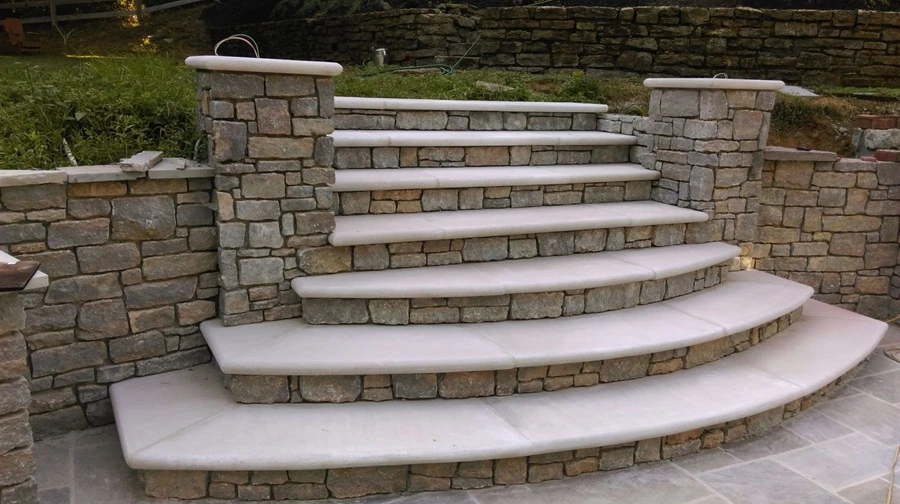
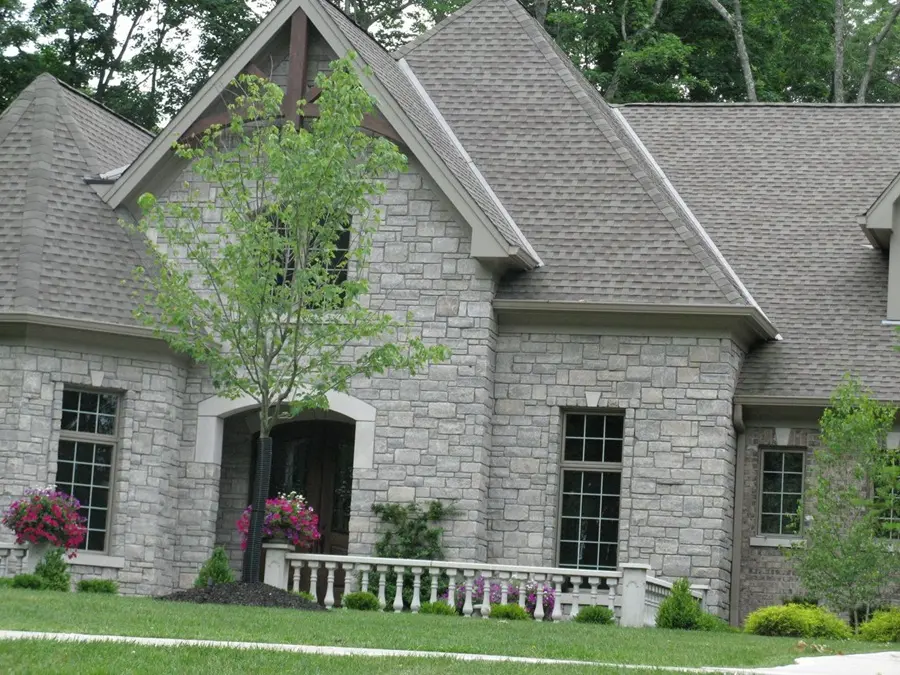
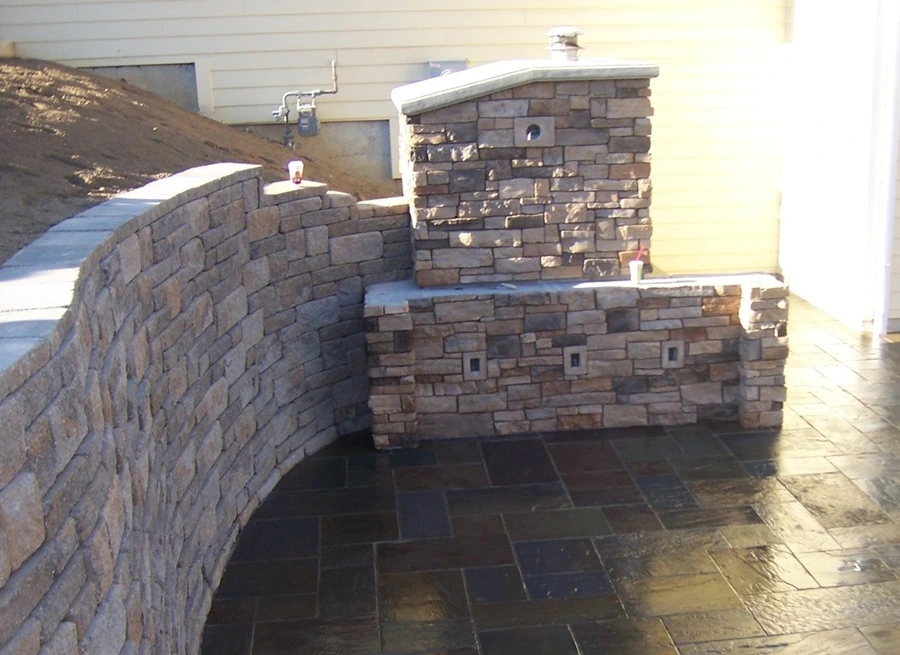

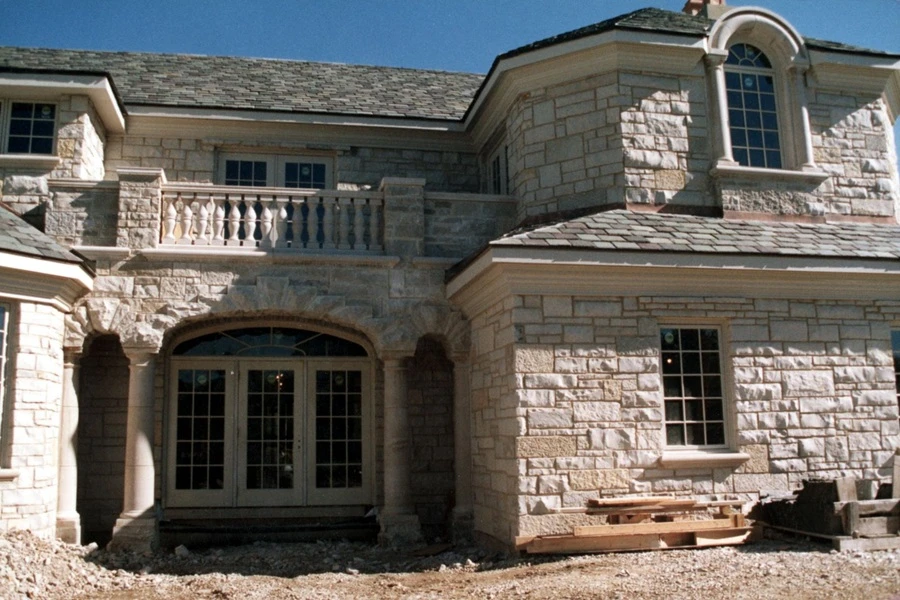


#gallery_end
Strength and Durability
Thin stone veneer holds up well in most settings, but its reduced thickness can make it slightly more vulnerable to harsh weather and temperature swings — something to consider if your project faces the elements year-round. Regardless, it's still real stone, and with basic care, it delivers lasting performance and timeless appeal.
Full stone veneer, on the other hand, is built to last. Its added thickness gives it an edge in resisting impact, moisture, and freeze-thaw cycles. For exterior applications in tough climates, full-thickness building stone is often the more rugged and reliable choice.
Ease of Installation and Maintenance
Thin stone veneer is lightweight, easy to handle, and installs quickly on most surfaces without the need for structural reinforcement, making it a go-to choice for remodels, DIY projects, and jobs with tight timelines. On the other hand, full stone veneer is heavier and more labor-intensive, often needing skilled installation and added support. However, the result is a solid, permanent finish with lasting value.
Cultured and natural stone veneers — whether thin or full — are both relatively low maintenance. Occasional cleaning with water and mild soap is typically all that's needed. For outdoor applications, especially in areas exposed to heavy weather or grime, occasional resealing may help preserve their look and durability.
Cost of Thin and Thick Stone Veneer
Understanding the full cost picture helps you make an informed decision for your project budget.
Thin stone veneer is a cost-effective option, usually priced between $6 and $12 per square foot. Due to its lighter weight and reduced shipping costs, installation labor typically ranges from $15 to $25 per square foot, making it an attractive choice for budget-conscious projects.
Full-bed stone veneer material often costs between $8 and $15 per square foot — though the material itself may be less expensive than thin veneer, installation costs run $25 to $40 per square foot due to the need for foundation footing, structural reinforcement, and more labor-intensive work. It requires more labor and structural prep, but its durability and timeless aesthetic can justify the investment.
Typical Stone Veneer Thickness
Understanding the answer to the commonly asked question “how thick is stone veneer” is essential when planning your project. Veneer thickness influences the look of the stone, structural requirements, installation steps, and long-term performance.
How Thick Is Thin Stone Veneer?
Thin stone veneer typically ranges from ½" to 1" thick, with most pieces averaging around ¾". This slim profile keeps weight down to about 7-15 lbs per square foot, making it easier to handle, faster to install, and more cost-effective to ship.
How Thick Is Full-Bed Stone Veneer?
Full-bed stone veneer comes in at 3" to 5" thick, weighing roughly 35-45 lbs per square foot. While it demands stronger structural support, it delivers bold texture, deeper shadow lines, and lasting durability — perfect for high-impact, high-value architectural features. For outdoor applications like kitchens, understanding thickness requirements helps ensure proper material selection.
Full Veneer vs. Thin Veneer Stone: Which Is Right for You?
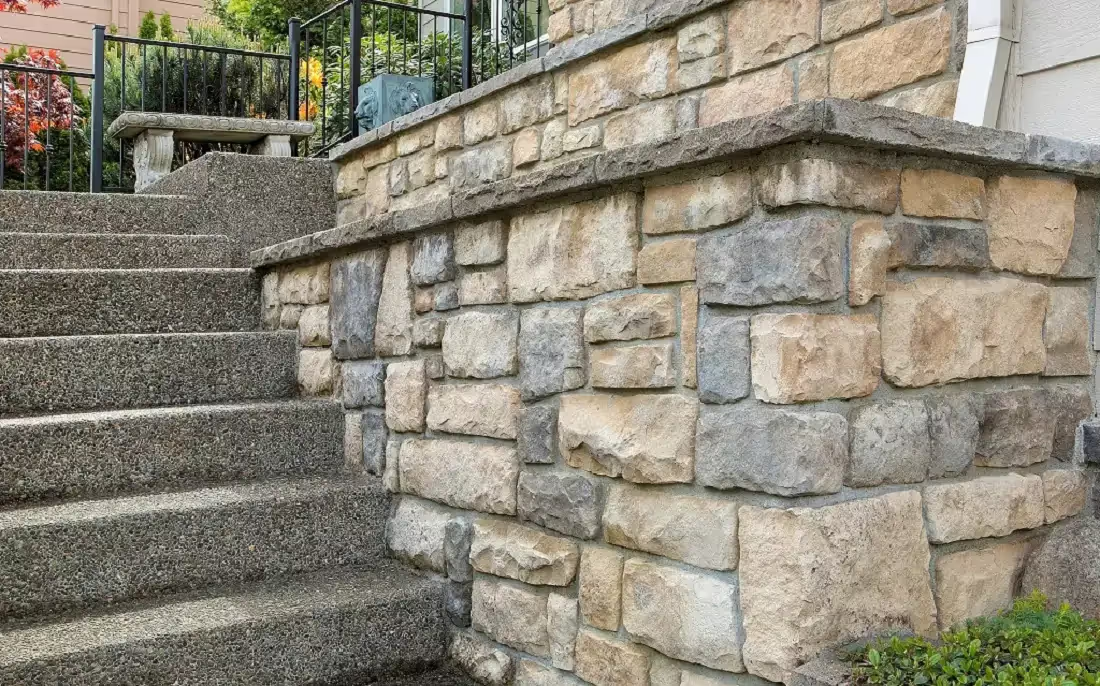
Now that you understand the difference between full bed stone vs veneer options and how the thickness of stone veneer impacts your project, it's time to decide which type works best for your home's curb appeal and functional needs.
Consider these key factors when making your selection:
- Project location and climate: In areas with extreme weather or high winds, full veneer stone's extra weight and durability provide superior performance, while thin stone veneer thickness suffices for milder climates.
- Weight restrictions: Thin veneer stone is ideal for applications where load-bearing limitations restrict the use of heavier materials, such as upper-story installations or retrofit projects on older buildings.
- DIY or for-hire: If you're planning on completing the work yourself, you may want to consider thin stone veneer. It's lighter and easier to install than full stone veneer, so it's a good option for do-it-yourselfers.
- Shipping cost and job site access: Thin veneer is easier and cheaper to ship, especially when access is limited.
The decision between full and thin veneer ultimately depends on balancing these various factors against your specific project requirements and long-term goals.
Your Stone Veneer Decision Just Got Easier
Clearly, there are a lot of things to consider when choosing between the thin stone veneer and full stone veneer. After all, understanding how thick veneer is and the effects that it has on your home is important to know. But now you are an informed customer!
At this point, you're likely wondering where to buy stone veneers in Ohio. At Stone Center, we proudly serve homeowners and contractors across the state with a wide selection of natural stone and stone veneer products. Whether you're working on a custom fireplace, a bold exterior wall, or a whole-home facade, we've got you covered. Get in touch with our local experts today and let's build something beautiful together.
FAQ
.avif)
Jon, the owner of Stone Center, is a knowledgeable expert in natural stone products, specializing in various types of stone for landscaping and architectural projects. Passionate about promoting the beauty and versatility of natural stone, Jon aims to use these blogs to inspire readers with creative ideas to upgrade their homes.
How much does it cost to get a stone restored?
How much you end up spending to restore stone varies on the type of stone, the technique, and the stone’s current condition. Stone in good condition will cost less to restore, whereas stone that has a lot of wear and tear may require a longer restoration.





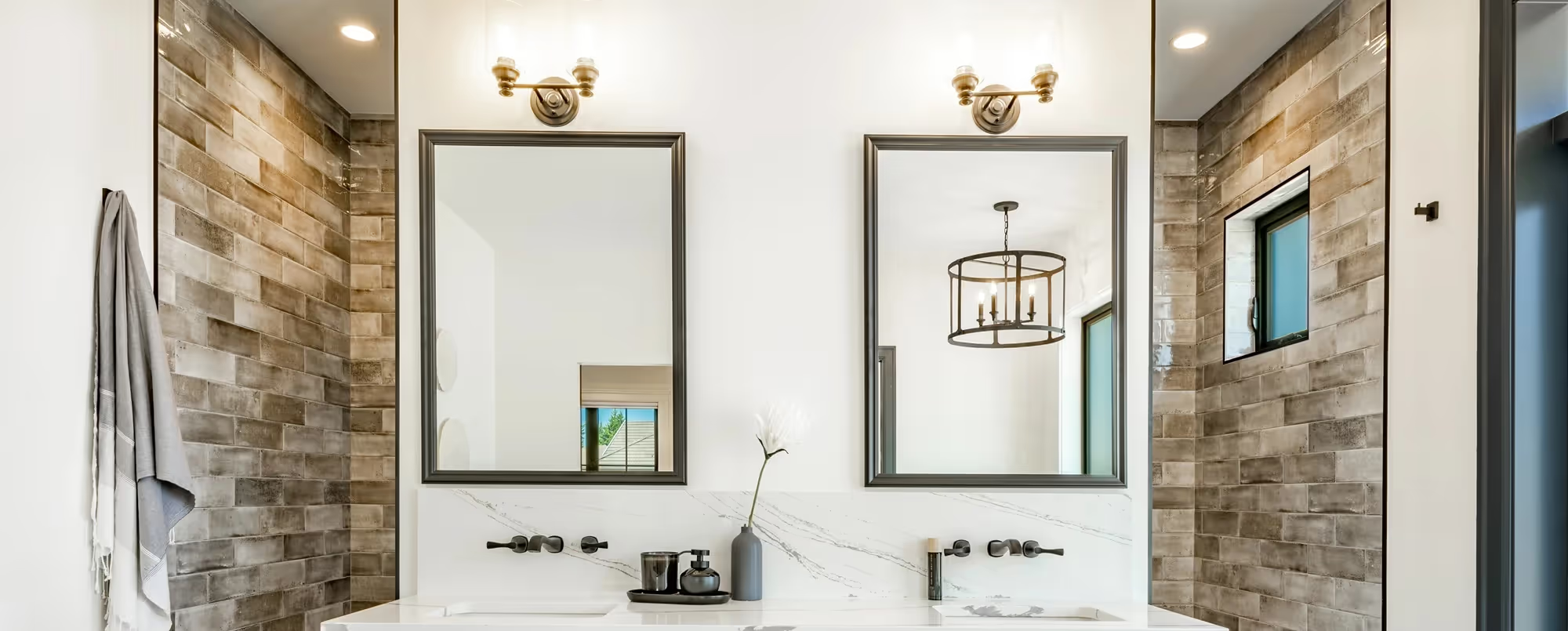

.avif)
.avif)
.avif)
%20(1).avif)
.avif)
